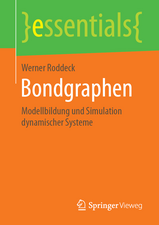Lens Design Fundamentals
Autor Rudolf Kingslake, R. Barry Johnsonen Limba Engleză Hardback – 8 mar 2010
- Thoroughly revised and expanded to reflect the substantial changes in the field since its publication in 1978
- Strong emphasis on how to effectively use software design packages, indispensable to today’s lens designer
- Many new lens design problems and examples – ranging from simple lenses to complex zoom lenses and mirror systems – give insight for both the newcomer and specialist in the field
This book provides the skills and knowledge to move into the exciting world of contemporary lens design and develop practical lenses needed for the great variety of 21st-century applications. Continuing to focus on fundamental methods and procedures of lens design, this revision by R. Barry Johnson of a classic modernizes symbology and nomenclature, improves conceptual clarity, broadens the study of aberrations, enhances discussion of multi-mirror systems, adds tilted and decentered systems with eccentric pupils, explores use of aberrations in the optimization process, enlarges field flattener concepts, expands discussion of image analysis, includes many new exemplary examples to illustrate concepts, and much more.
Optical engineers working in lens design will find this book an invaluable guide to lens design in traditional and emerging areas of application; it is also suited to advanced undergraduate or graduate course in lens design principles and as a self-learning tutorial and reference for the practitioner.
Rudolf Kingslake (1903-2003) was a founding faculty member of the Institute of Optics at The University of Rochester (1929) and remained teaching until 1983. Concurrently, in 1937 he became head of the lens design department at Eastman Kodak until his retirement in 1969. Dr. Kingslake published numerous papers, books, and was awarded many patents. He was a Fellow of SPIE and OSA, and an OSA President (1947-48). He was awarded the Progress Medal from SMPTE (1978), the Frederic Ives Medal (1973), and the Gold Medal of SPIE (1980).
R. Barry Johnson has been involved for over 40 years in lens design, optical systems design, and electro-optical systems engineering. He has been a faculty member at three academic institutions engaged in optics education and research, co-founder of the Center for Applied Optics at the University of Alabama in Huntsville, employed by a number of companies, and provided consulting services. Dr. Johnson is an SPIE Fellow and Life Member, OSA Fellow, and an SPIE President (1987). He published numerous papers and has been awarded many patents. Dr. Johnson was founder and Chairman of the SPIE Lens Design Working Group (1988-2002), is an active Program Committee member of the International Optical Design Conference, and perennial co-chair of the annual SPIE Current Developments in Lens Design and Optical Engineering Conference.
- Thoroughly revised and expanded to reflect the substantial changes in the field since its publication in 1978
- Strong emphasis on how to effectively use software design packages, indispensable to today’s lens designer
- Many new lens design problems and examples – ranging from simple lenses to complex zoom lenses and mirror systems – give insight for both the newcomer and specialist in the field
Preț: 506.87 lei
Preț vechi: 556.99 lei
-9% Nou
Puncte Express: 760
Preț estimativ în valută:
97.00€ • 105.33$ • 81.48£
97.00€ • 105.33$ • 81.48£
Carte tipărită la comandă
Livrare economică 16-30 aprilie
Preluare comenzi: 021 569.72.76
Specificații
ISBN-13: 9780123743015
ISBN-10: 012374301X
Pagini: 576
Dimensiuni: 152 x 229 x 33 mm
Greutate: 0.89 kg
Ediția:2. Auflage.
Editura: Elsevier
ISBN-10: 012374301X
Pagini: 576
Dimensiuni: 152 x 229 x 33 mm
Greutate: 0.89 kg
Ediția:2. Auflage.
Editura: Elsevier
Public țintă
Optical engineers working in lens design; graduate students taking courses in lens design in an optics and optical engineering program.Cuprins
1. The Work of the Lens Designer2. Ray Tracing3. Paraxial Rays and First-Order Optics4. Introduction to Aberration Theory5. Axial Chromatic Aberrations6. Spherical Aberrations7. Design of a Spherically Corrected Achromat8. Oblique Pencils9. Coma and the Sine Condition10. Design of Aplanatic Objectives11. The Oblique Aberrations12. Lens in which Stop Position is a Degree of Freedom13. Symmetrical Double Anastigmats with Fixed Stop14. Unsymmetrical Photographic Objectives15. Mirror and Catadioptric Systems16. Eyepiece Design17. Computer-Aided Lens Design
Recenzii
"Johnson, a cofounder of the Center for Aplied Optics at the University of Alabama in Huntsville, offers an updated edition of the text by the late Kingslake, a founding faculty member of Rochester’s Institute of Optics and widely regarded as the father of lens design in the United States." --Rochester University Magazine























